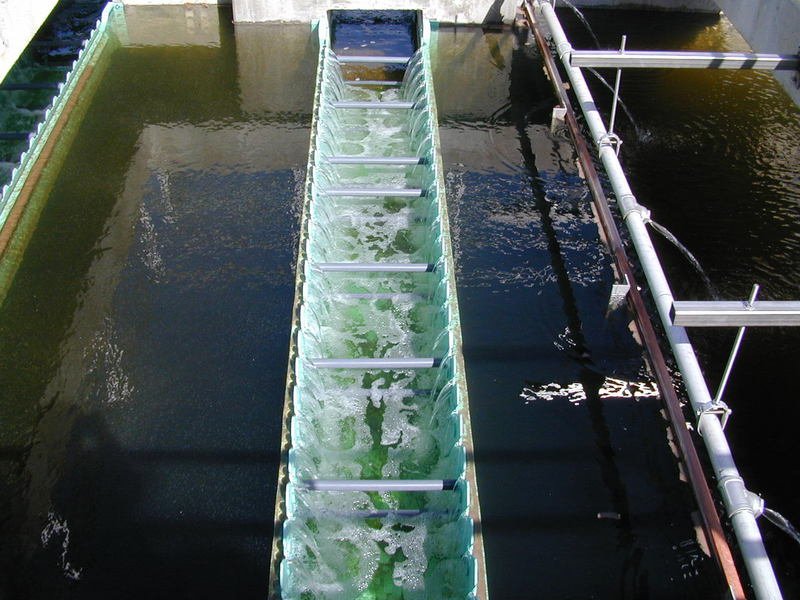What Happens In Desalination
What Happens in Desalination: A Comprehensive Exploration
Introduction
Access to clean and safe water is a fundamental human necessity. However, with increasing population, industrialization, and climate change, freshwater resources are under unprecedented stress. As a result, desalination has emerged as a vital technology for providing potable water in areas suffering from freshwater scarcity. This article delves into the intricate world of desalination, exploring its processes, technologies, benefits, challenges, and future prospects.
The Science of Desalination
Desalination is the process of removing dissolved salts and other impurities from seawater or brackish water to produce water suitable for human consumption or irrigation. The two primary methods of desalination are thermal and membrane processes, each with its own subtypes and mechanisms.
-
Thermal Desalination
-
Multi-Stage Flash (MSF) Distillation: This method involves heating seawater until it vaporizes. The steam is then condensed into fresh water while leaving the salts behind. MSF utilizes multiple stages of flash evaporation, wherein seawater is heated and passed through a series of chambers with decreasing pressure. This results in the rapid boiling or ‘flashing’ of water at each stage, producing steam for condensation.
-
Multi-Effect Distillation (MED): Similar in principle to MSF, MED uses a series of vessels or ‘effects’ where evaporation and condensation occur repeatedly. The process involves preheating incoming seawater with the generated steam, improving energy efficiency. The steam from each effect is used to heat the next, lowering energy input requirements.
- Vapor Compression Distillation (VC): In VC desalination, mechanical or thermal energy compresses the vapor produced by seawater evaporation, which is subsequently condensed to fresh water. This method is typically used in small to medium-scale operations due to its energy efficiency.
-
-
Membrane Desalination
-
Reverse Osmosis (RO): The most commonly employed desalination technology, RO, works by forcing seawater through semi-permeable membranes under high pressure. These membranes allow water molecules to pass while blocking salts and other impurities. RO is energy-efficient compared to thermal methods and is widely used globally.
-
Electrodialysis (ED): In ED, ions from dissolved salts are moved through ion-exchange membranes by an applied electric field, separating them from freshwater. This method is effective for brackish water desalination and requires a lower energy input compared to seawater desalination.
- Nanofiltration and Forward Osmosis: Emerging technologies like nanofiltration and forward osmosis promise enhanced performance and energy efficiency. These methods use advanced membranes to selectively remove specific contaminants, offering potential improvements over traditional RO.
-
Applications of Desalination
Desalination is employed across various sectors, providing critical water resources where natural freshwater is inadequate. Key applications include:
-
Municipal Water Supply: Desalination plants furnish potable water to millions of people in water-scarce regions like the Middle East, Australia, and parts of the United States. Cities and towns rely on desalinated water to meet daily consumption needs.
-
Industrial Use: Industries such as power generation, oil and gas, and agriculture benefit from desalinated water. It serves as cooling water, process water, and is used for irrigation in areas where freshwater is unavailable.
-
Agricultural Irrigation: Desalinated water supports agriculture in arid regions, enabling the cultivation of crops where freshwater sources are insufficient.
- Emergency and Military Applications: Desalination provides vital freshwater supplies during natural disasters and for military operations in remote areas, ensuring a reliable water source.
Benefits of Desalination
Desalination offers numerous advantages, making it a compelling solution for water-scarce regions:
-
Reliable Water Supply: Unlike traditional water sources that depend on rain and seasonal changes, desalination provides a consistent and reliable supply of freshwater.
-
Independence from Climate Variability: As climate change disrupts weather patterns and exacerbates droughts, desalination remains unaffected by such variability, ensuring consistent water availability.
-
Enhances Water Security: By diversifying water sources, desalination strengthens water security, particularly for coastal cities and regions with limited freshwater resources.
-
Supports Economic Growth: Access to a stable water supply supports economic development by enabling industrial, agricultural, and urban growth.
- Technological Advancements: Innovations in desalination technology are continually improving efficiency, reducing energy consumption, and lowering costs, making desalination more economically viable.
Challenges and Considerations
Despite its advantages, desalination faces several challenges and considerations:
-
High Energy Consumption: Desalination processes, particularly RO, require substantial energy input, contributing to high operational costs and environmental impacts.
-
Environmental Concerns: The disposal of brine—a highly concentrated salt byproduct—poses environmental risks. Brine can harm marine ecosystems if not managed properly.
-
Infrastructure and Cost: Building and maintaining desalination plants require significant infrastructure investments. High operational costs can impact water affordability for users.
-
Water Quality and Health: Ensuring the desalinated water meets health and safety standards is crucial. Proper management and monitoring are necessary to prevent risks associated with contaminants or pathogens.
- Regulatory and Policy Framework: Effective regulatory frameworks and policies are needed to oversee desalination projects, ensuring they adhere to environmental and safety standards.
Current Innovations and Future Outlook
The future of desalination holds promise as ongoing research and technological developments address existing challenges:
-
Energy Efficiency: Advancements in energy recovery systems and the integration of renewable energy sources can reduce the energy footprint of desalination plants. Solar desalination and the use of wind power are being explored to power both thermal and membrane processes.
-
Improved Membranes: Research into new membrane materials, such as graphene and biomimetic membranes, aims to enhance permeability, reduce fouling, and lower energy consumption.
-
Brine Management: Innovative brine management techniques, such as brine concentration and salt extraction, can mitigate environmental impacts and potentially generate valuable byproducts.
-
Integrating Smart Technologies: The use of smart sensors and automation in monitoring and control systems can improve efficiency and reduce operational costs.
- Hybrid Systems: Combining different desalination technologies in hybrid systems optimizes energy use and water production, enhancing overall performance.
Conclusion
Desalination is an indispensable technology for addressing global water scarcity. While challenges remain, continuous innovations and advancements are driving desalination towards greater efficiency and sustainability. As the demand for freshwater grows, desalination will play an increasingly pivotal role in securing safe and reliable water supplies for future generations. Through thoughtful management, policy support, and technological progress, desalination can realize its full potential as a key solution to the world’s water challenges.



